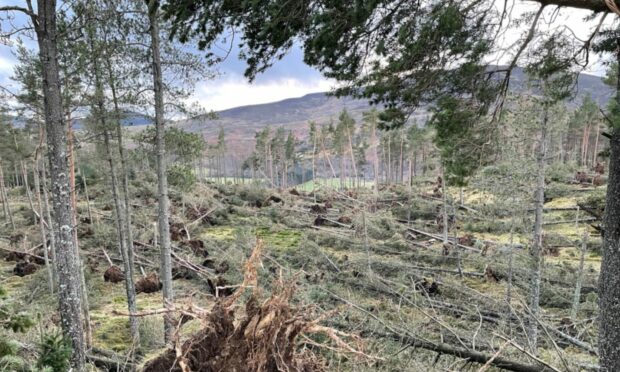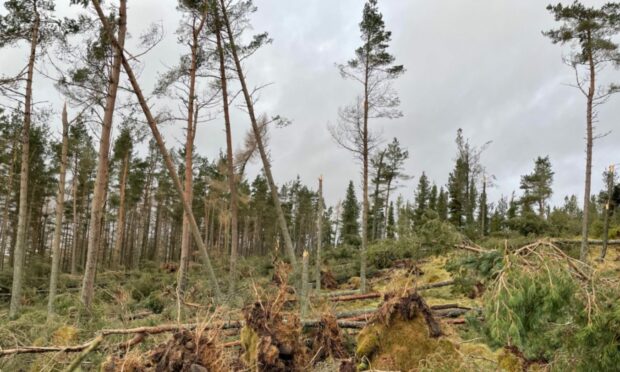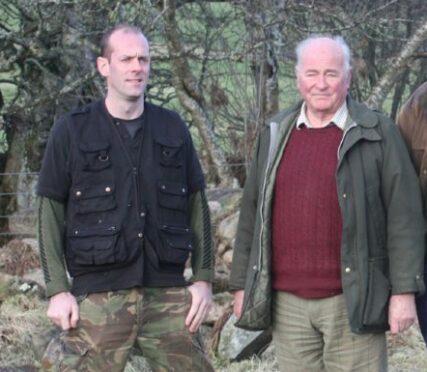A Perthshire landowner who estimates Storm Arwen felled 5,000 trees in just one Glenisla plantation has called on Scottish Forestry to take a more urgent approach to granting licences to clear woodland.
Major John Gibb of Glenisla House, Blairgowrie, has written to Rural Affairs Secretary Mairi Gougeon pointing out that contractors are eager to get the go ahead to harvest fallen timber before it starts to deteriorate and discolour.
He wrote: “How long will this permission take to allow the woodland owner to proceed, especially when it seems to take many months to get a plan of operations approved – currently six – eight months minimum?
“Storm Arwen has devastated many woodlands in Glenisla district. This should by now have been taken onboard by Scottish Forestry and politicians responsible for forestry in Scotland. So far there has been very little publicity or acknowledgement of this disaster.”
Major Gibb said the woodlands around Auchentaple Loch, a well-known walking area which is part of the Cateran trail, had suffered enough damage to warrant a clear-fell.
“Some of the areas are completely flattened, others heavily or lightly thinned,” he said.
“Most of the woodland comprised of Scots Pine and Larch, all brashed and pruned to 12 feet or more. Most of the Scots pine were destined for long term retention. They have mostly gone. Perimeter fences have either been flattened or uprooted in places.”
A Scottish Government spokesman said work had started immediately in the aftermath of Storm Arwen to identify damaged forests and woodland areas.
“Scottish Forestry has put in place extra measures to help woodland owners with the aftermath of Storm Arwen and have allocated extra staffing to the areas in most need,” he spokesperson added.
“Felling permissions, which are now required for wind blow, are being fast tracked.
“It would normally take six weeks for a permission to be processed – this is now being done in around six days. Scottish Forestry is also fast tracking amendments to long term forest plans.”
Major Gibb said that the scale of the damage to forestry in Glenisla was on a par with the 1953 gale which devastated Deeside, when landowners who lost woodland were compensated.
“What I think we should seek now is compensation, possibly in the form of enhanced re-stocking grants, up to the level of grants paid on virgin land enclosed for forestry,” he said.
“This could compensate for reduced timber value, re-fencing, possible road making, loss of Biodiversity and amenity.”
The Scottish Government spokesperson said: “While there are no specific grants to give woodland owners to restock their trees after storms, Scottish Forestry does give grants towards creating better resilience and diversity of tree species.”


